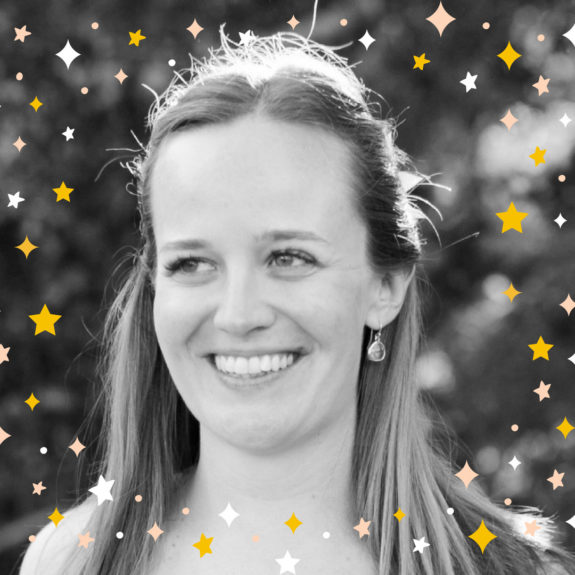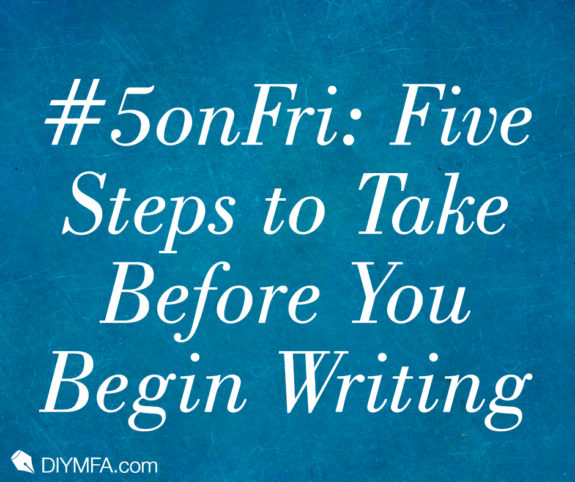I used to think writing only counted as writing if I had a document open and was adding to the official word count. But over the last few years, my writing process has deepened to include the important creative work that happens before I ever open a document. I like to think it has enriched my writing. I know it has made the process easier and more enjoyable. Here are five steps you may want to take before you officially start writing.
1) Read Like a Writer
Reading with intention is one of the best ways I know to grow as a writer. Reading like a writer is a simple but powerful practice. It means slowing down, reading every word, taking notes, mulling them over, and then thinking about the elements you struggle with in your own writing. It’s about asking questions and looking for specific answers—or letting them infuse your writing intuitively.
Reading in your genre is a way to deepen your craft even when you’re not working on a specific project. The process can leave you feeling inspired to work on your own manuscript and provide techniques you can use to solve future problems. Along the way, you’ll understand trends in the market and probably find yourself falling in love with writing all over, which can be really energizing if you’re feeling a little burned out.
2) Gather Inspiration
When you’re in the early dreamy stages of writing, it can help to look beyond books for inspiration. Visiting museums, reading magazines, listening to podcasts, playing games, and eavesdropping can all add layers to your vision. If it feels like you’re getting away with something and playing a little too much, you’re probably doing it right. This is the phase when you’ll have your most original ideas. Give them time to appear. The trick is to start with the project in mind and then wander off to follow inklings, curiosities, and questions. It might not appear productive, but the writing process isn’t linear. Meandering makes it more likely you’ll stumble on a fresh perspective.
3) Start a Nebula Notebook
As you’re gathering inspiration, you’ll probably start having ideas. Resist the urge to open a document. Try to work by hand as long as possible. I find it helps me stay looser and more creative. When I start a new project, I record whatever comes to me or feels important in a small notebook. That includes snippets, ideas, sentences, phrases, words, even my own terrible sketches. I call it my Nebula Notebook to help me remember that it’s ok to get dreamy, drift, and explore at this stage. I make a promise to myself that I will fill the notebook before I open a file, because as soon as that happens, it feels like I’m officially writing and need to act like an official writer who follows the rules. Of course, it’s not true, but if this is what it takes to trick my brain into being more relaxed (read: more creative), I’ll do it.
4) Journal About Your Project
Sometimes it helps to describe your project to a writing friend. Other times you’re not quite ready for that step, and a journal can be a welcome place to share those roughest of rough ideas. You’ll feel good about getting something down on paper. At the same time, you’ll be articulating to yourself what the story is about and identifying the thoughts and feelings you want to leave the reader with. Feel free to vent and get angsty about the writing process. Then write an encouraging letter to yourself explaining why you should keep going.
5) Build the World You Want to Live In
Artists and designers build mood boards all the time. Why not writers? Creating a mood board of character and setting references, colors, quotes, and other details that evoke the story you want to tell can help you define and live in the world you’ll be writing about before you begin. Even writers can be visual thinkers. It can help so much to have visual references. But it’s not just about staring at the mood board as you write. The process of creating the board will help you explore ideas and work out what your story is really about. Building a mood board will keep your hands busy and your inner editor quiet while your unconscious does the work, which is really what the creative process is all about, whatever stage you’re at.

Writer and editor Heidi Fiedler has worked on more than 300 books. Whether it’s a poetic picture book, a zippy chapter book, or a kid-friendly take on the physics of time travel, her books are quirky, playful, highly visual, and often philosophical. Learn more about Heidi, her books, and the classes she teaches at helloheidifiedler.com or say hello on Instagram @heidifiedler.







